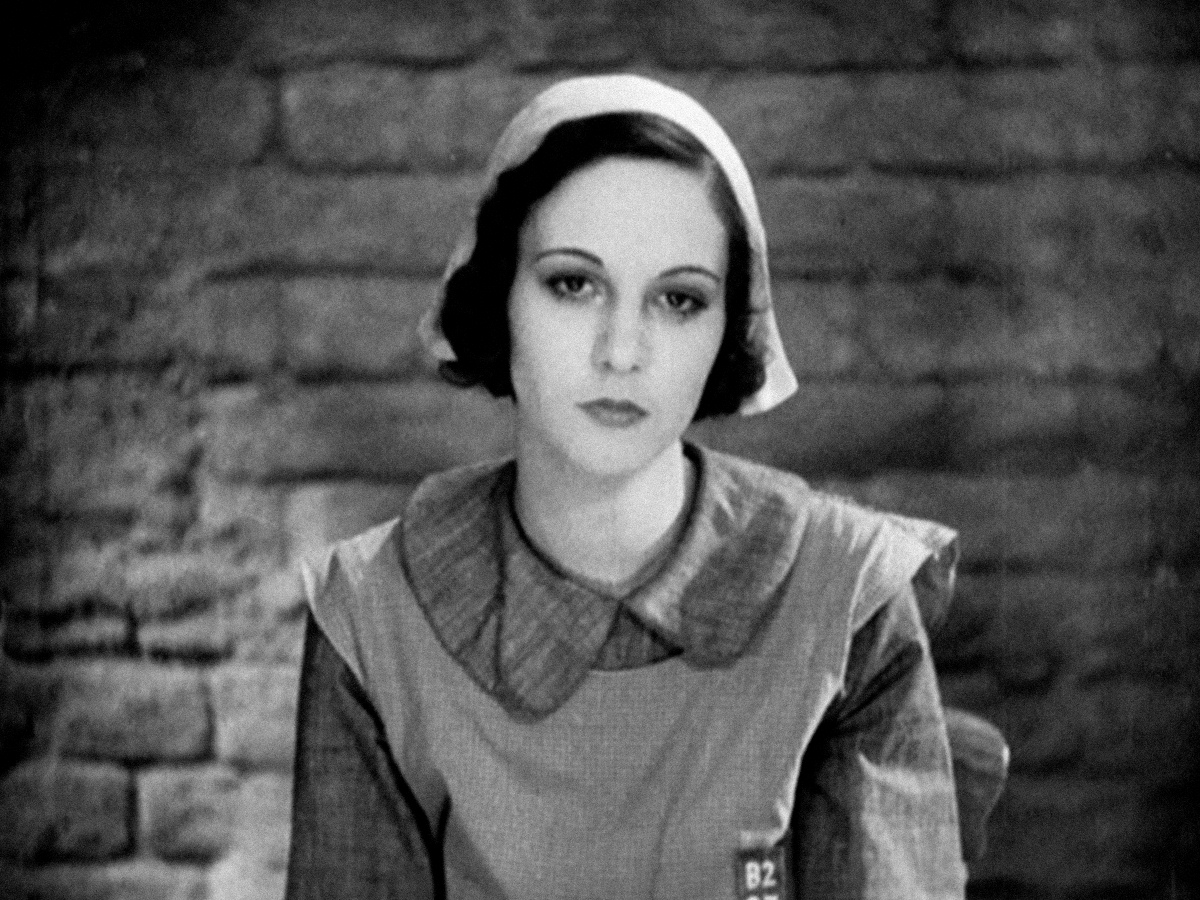A Year with Hitchcock: Murder!, by Reed Lackey
24 Feb
In many ways, Murder! is Hitchcock’s first example of falling just shy of expectations and potential. That’s not to say that this is a bad film. In fact, it’s often quite good. But given the potential in the premise, and the promise of Hitchcock tackling a classic whodunit formula, this could have been much more thrilling, suspenseful, and intriguing.
The film begins with a scream. Someone has been murdered. And found, looming over the dead body, is a woman with whom the victim had a notoriously bitter rivalry. She is arrested, tried, and convicted for the murder. The only problem is that she has pled not guilty and is clearly concealing certain elements of the whole truth. One juror, although initially pressured into a guilty verdict, takes it upon himself to investigate the case further independently.
Such a premise has all the makings of a confirmed classic from the master of suspense. However, the end result is excessively talkative, and surprisingly devoid of suspense (until an alarming final few moments). But despite a chilling climactic scene, the rest of the film is unfortunately more tedious than engaging and more mechanical than thrilling.
Hitchcock himself expressed a general distaste for the whodunit mystery. He described them as a sort of “intellectual puzzle” which is not well suited for producing suspense or engaging emotions. Rather, whodunits are dependent upon elements of surprise wherein revelations of facts or connections provide the ultimate satisfaction potential. Hitchcock would rarely ever work in this specific subgenre again. He far more preferred to deal in suspense, wherein the audience knows far more than the narrative’s characters and they are aware of dangers and threats before the film’s core cast.
Anchoring this film is a regal performance by Herbert Marshall as Sir John Menier, the juror who takes up the convicted woman’s case as his own private investigation. He is studious and sophisticated, providing an appropriate gravity to the whole proceedings. He delivers one of the best lines I’ve heard in a Hitchcock film yet when he says, “We use life to create art and we use art to criticize life.”, which provides a loose thematic compass for the story’s primary plot.
The film is also notable as being the first film in cinema history to utilize an “inner monologue” voiceover, which occurs as Sir John is first trying to work out whether or not he believes the convicted woman is innocent or guilty. The technique by which Hitchcock achieved this was wildly innovative for the time, involving a thirty-piece on set orchestra playing alongside a pre-recorded monologue by Marshall as he performed his silent moment simultaneously.
I should also note that one particular character (who is later revealed to be bi-racial and homosexual) is handled rather tragically. I found myself wondering how the film felt about this character, given that he is presented in both sympathetic and disdainful ways. It is difficult to indict the film for dismissing him, given that he’s shown with tremendous sympathy. But it’s equally difficult to praise the film for its portrayal, given that he’s a homicidal and secretive character. Ultimately, he meets a tragic end, which could be problematic depending on your reading of the film.
Murder! is an interesting early entry for Hitchcock, even if it’s not a particularly thrilling one. He simultaneously filmed Mary – the German version of the identical film – with a different cast. Both versions have their merits, but neither are particularly worth tremendous effort in locating and seeing.
Summary:
Accessibility – Available on several low-budget DVD collections
Themes – Social Prejudices; Accused Innocent Woman; Secrets and Lies
Category – For Completists Only




No comments yet